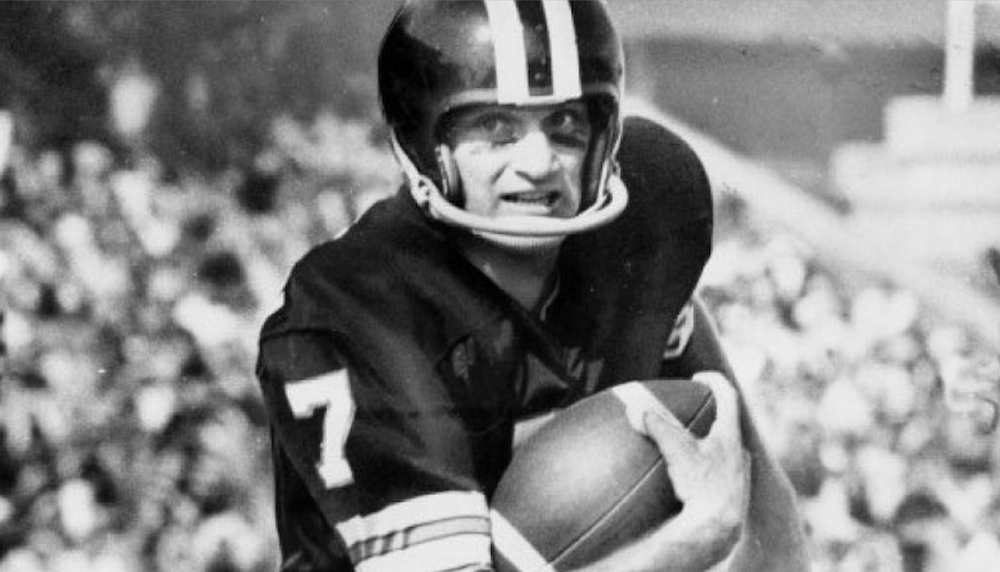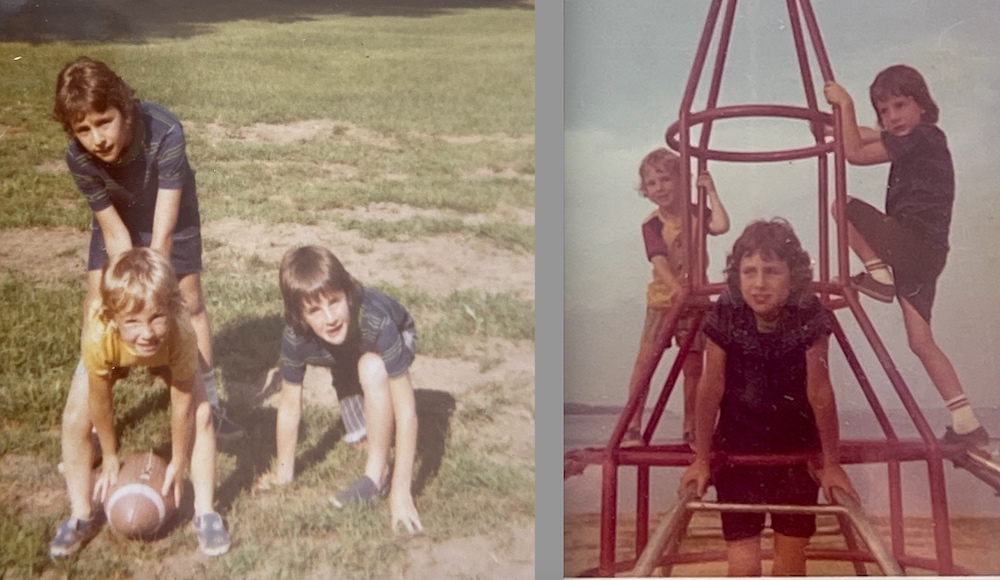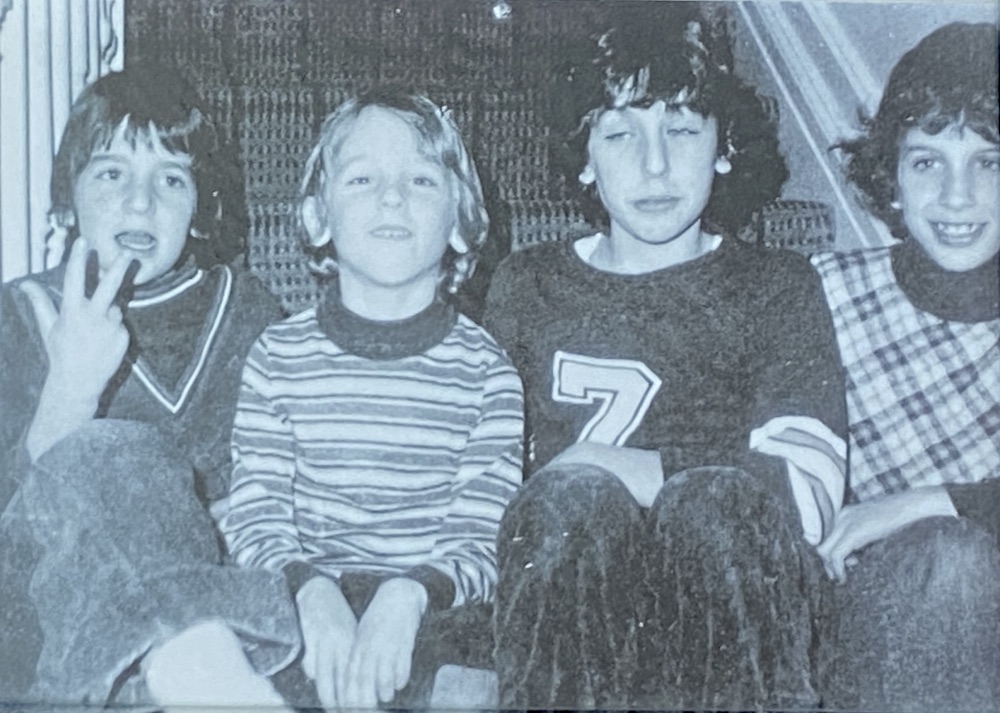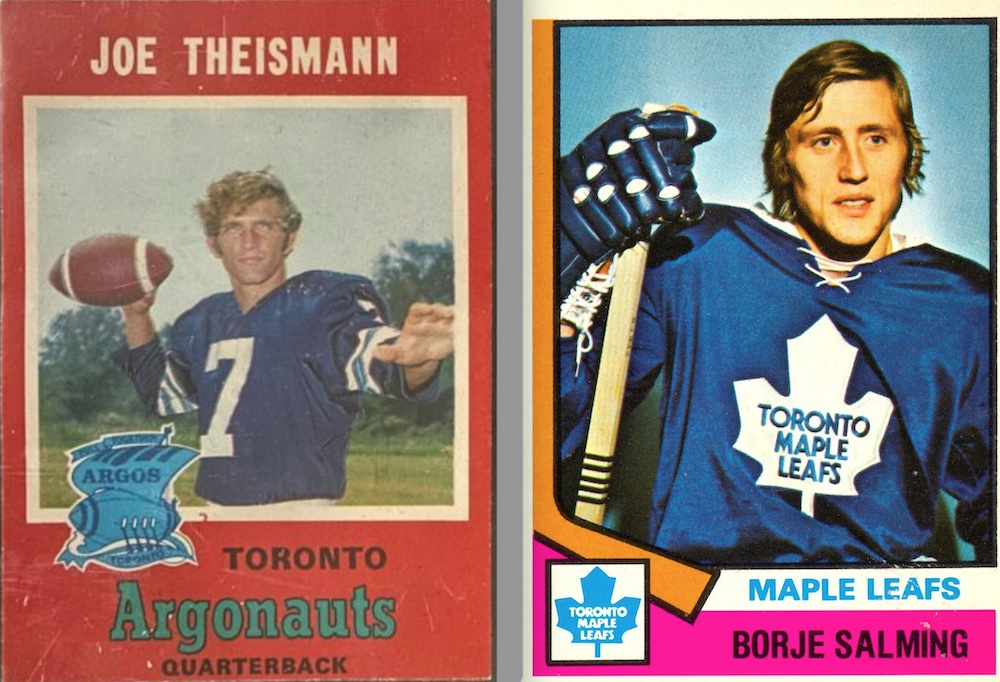Joe Theismann hobbled towards me on crutches, his right ankle encased in a cast to protect a broken bone. I, too, was in a cast. Mine went from the tips of the fingers on my right hand all the way up to my shoulder. I’d broken both bones in my wrist around the same time Theismann had broken his ankle. My dad and I had made our way down to the sidelines as the players came onto the field. I was too shy, but my dad called out, “Joe, would you sign my son’s cast?”
As he made his way over to me, Theismann said, “Signing casts isn’t exactly my bag.” But he was smiling when he said it. And he signed it for me. He didn’t ask me to sign his.

I know what some of you are thinking. Who in their right mind would ask Joe Theismann to sign his cast so soon after that injury?
But this wasn’t the gruesome, career-ending broken ankle of Monday Night Football fame from November 18, 1985. What Theismann said to me is a pretty good clue that we were in an earlier era. This all happened shortly after Joe’s Toronto Argonauts season-altering broken ankle of August 3, 1972.
He signed my cast before the next Argos home game on August 16 — 50 years ago tonight.

I kept that cast for the better part of 20 years, until it all but crumbled to dust.
I always say baseball is my favourite sport. And hockey is the sport that has been the main part of my professional life for almost 30 years. But football was my first sports love, and Joe Theismann was my first sports hero. He led Toronto to a 10-4 record and the East Division championship as a rookie in 1971 — before a crushing defeat by the Calgary Stampeders in the Grey Cup. I’d seen my first Argos game in person earlier that season, and was hooked on football!

It’s just a coincidence about the 50 years, but I’ve been thinking about that night a lot lately. Last month, on the same night we had the local launch party for my new hockey book, Engraved in History: The Story of the Stanley Cup Champion Kenora Thistles, I spent almost the entire day prior to that (7:35 am to 4:55 pm) doing 17 different phone and zoom interviews for my other current book, It’s a Numbers Game! Football, published by National Geographic Kids. (I did an 18th interview the following week.)

I’ve never done that much promotion for anything before. It was fun … but it was exhausting. I’d written about me and Joe Theismann in a brief biography the NGK publicity people put together for the day … and practically everyone I spoke to asked me about it! If you care to watch, you can see me telling the story in the first few minutes of my interview on The Douglas Coleman Show, a syndicated talk and music show/podcast.

Theismann spent just three years in Toronto through 1973 before signing with Washington and jumping to the NFL. Interestingly, 1973 was the same year that Borje Salming signed with the Maple Leafs and entered the NHL from Sweden. I suppose it’s because Theismann spent only those three seasons with the Argos (when I was seven-to-10-years-old) that I associate his time in Toronto with my childhood. Salming was with the Leafs for 16 seasons until 1989 (when I was 25) and has, really, been associated with the city ever since.
You may have heard the announcement last week that Salming has been diagnosed with ALS — Lou Gehrig’s Disease. Though there are better treatments now, there is still no cure for ALS. It’s a horrible disease … and it’s horrible news.

I have no personal connection to Salming, other than having watched and admired him for years. Before he came to Toronto, goalie Jacques Plante was my first favourite Leaf. (He was with the team from 1970 to 1973.) After that, I could never settle on just one. I was a big fan of Darryl Sittler, Mike Palmateer, and many of those mid-to-late ’70s Leafs. Still, Salming — with his unique brand of toughness in an era of goons — was always something special.
I recently asked my brother David what his first memory of Salming was.
It was exactly the same as mine.

We were at our family cottage late in the summer of 1973. (It was just a year after my broken arm. We were seven and nine years old.) David was looking at a newspaper story with the Maple Leafs roster, probably for training camp. There were names he recognized from the past season, and new players he hadn’t heard of yet. Two of the new names were strange, and he read them out loud to me: Borje Salming and Inge Hammarstrom.
Our family was a Toronto Star family, and I figured it would be easy to track down the article in an online search. It must have been August, or the Labour Day weekend at the very latest.
But I couldn’t find it.
Strange.
Good luck to Borje and his family. It’ll be a tough battle. But few people are tougher than he is.
Wonderful memories. Jake The Snake was/is my all-time favourite Hab.
Yeah, it’s funny about Plante. Because of my age, and when he was with Toronto, I think of him as a Maple Leaf. As I kid, I’m not even sure when I became aware of all of his history before the 1970-71 season!
I covered the Islanders and Devils for MSG Networks and I remember Borje very well. Correct; nobody tougher. It was especially challenging for a Swede in those days but Borje took all the tough stuff and emerged a Hall of Famer. We pray for his recovery.
Your comment about Salming’s toughness is interesting because people have expressed surprise that a Swede could be so resilient but they forget that he came from northern Sweden, north of the Arctic Circle if I am not mistaken and like the northern Canadians who were the bedrock of the early NHL learned to be tough to survive as he grew up. Not enough has been publicized about his Indigenous status, a Laplander and the first Indigenous person in the Hockey Hall of Fame. Another source of stoic toughness.
I’m not sure I knew that he had Indigenous roots. Can’t say I know a lot about Laplanders!
But, even so, what about George Armstrong?
As a Bruins’ fan, it was jaw dropping when Plante was traded to Boston. The Leafs ended up getting a first round pick which turned out to be Ian Turnbull and later Eddie Johnston. Pretty good deal for Toronto as Plante played only 8 games for Boston.
Harold “Mr. Open Heart” Ballard said he loved Salming “like a son” until the latter asked for a raise and was quickly traded. Mind you, he wasn’t loving to his son either. But Yolanda’s son’s condoms and dry cleaning bills were paid by the Owner of the Leafs and Tiger-Cats (to keep a football entry in this).
Hal is in the Hall of Fame as a ” builder”?? Destroyer is a better term!!!
Salming never got traded. Signed with Detroit as free agent in 1989, 10 or 11 months before Ballard died.
Salming was near the end of his career and retired after one year in Detroit.
Toronto Coach John Brophy wanted him traded a little while before, but Ballard refused to trade him. GM Punch Imlach had the same problem before, as Salming had a no trade clause.
In Imlach’s book he said that in the summer of 1980 he went to Sweden to negotiate a new contract for Salming. He said to Salming, « You and Darryl Sittler set the record for giving away the puck. »
Salming said, « Is that so? »
No new contract was signed until Imlach was in the hospital the following summer. Over Imlach’s head, Ballard signed Salming to something like a five-year $350,000 a year contract.
That was his way of letting Imlach know he wasn’t wanted. When Imlach came out of the hospital and went to meet Ballard in his office they discussed that signing and Ballard told Imlach he wanted him back as adviser, but not GM.
Imlach went home to recover and when he figured he was ready to go back to work he returned to Maple Leaf Gardens and saw that his parking space was taken:
I remember seeing the disintegrating cast with Joe Theismann’s autograph on it every time I put clean clothes in your closet. We didn’t have mice, thank goodness, but I feared mice would make a home in it if we did. I was relieved when you finally decided to get rid of it.
Good memories.
Finally got to read this article. I loved the pictures of you and your brothers!